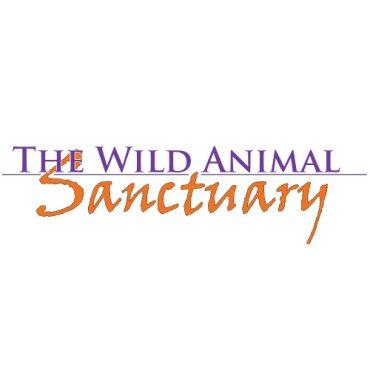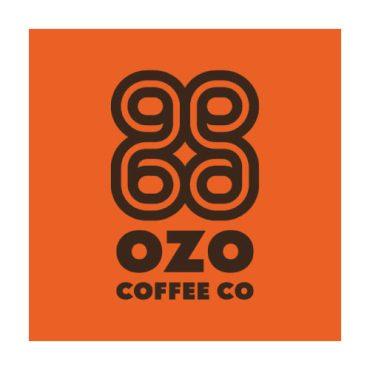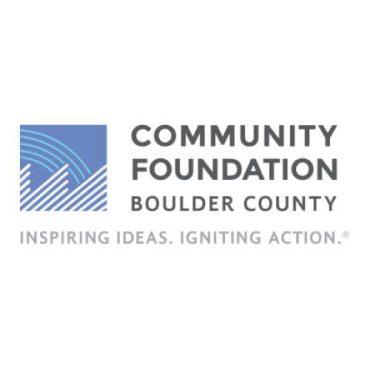KGNU’s Natalie Shrewsbury interviews Catrene Malshy. Catrene reflects on her journey of embracing and spreading Middle Eastern music and culture. Her band members, who bring together Arabic and Hebrew music, share their musical journeys and the significance of their instruments, from the oud to various hand drums. Their performances aim to foster understanding and unity through the universal language of music, advocating for love, forgiveness, and a better future (Interview date: 5/22/2024)
Natalie Shrewsbury: My guests are Catrene Malshy and friends. Introduce yourselves and tell us a little bit about you and what inspires you about the music and cultures represented.
Catrene Malshy: Thank you. Yes. My name is Catrene Malshy and I’m originally from Haifa, Israel, Palestine. I got into singing in public in 2009. I was inspired by my own culture, finally, although as a teenager, I listened to a lot of American pop music. As an adult, after I immigrated to the States, I realized how much I missed it and how important it is to me to keep the music going, spread the culture.
Nowadays with the news that we watch, I’m very proud that today I have friends with me to show music from the Middle East that combines Palestinian, Arabic; and Hebrew, Israeli. I’m very proud of these amazing musicians that are with me. We’ll introduce maybe an instrument or two and sing for you guys.
Hal Aqua: My name is Hal Aqua, and I have a local band in Denver called the Lost Tribe, which is a Klezmer band, playing mostly Eastern European Jewish music. I met Catrene a bunch of years back now, and she’s one of my most inspirational figures in my life.
We put together a series of concerts a few years back called Shalom Salaam, or Salaam Shalom, where we combined Middle Eastern and Klezmer music and played Jewish and Arabic music together. We’re looking for that common ground where we’re all speaking the same language of love and support.
Theo: My name’s Theo, and I’ve been playing this Middle Eastern hand drum for more than 10 years because I love the drum. I love the music and I enjoy being part of a multicultural group representing harmony and peace.
Alyssa Nova: My name is Alyssa Nova, I’ve been playing percussion since the fourth grade. I started with western symphonic percussion concert band orchestra.
I did drumline marching percussion for about a decade. And then after college, I started branching out into world music including a little bit of African, Japanese Taiko, and Middle Eastern. And I’ve specialized in classical Arabic for about 20 years now.
I moved to Longmont a couple of years ago from out of state and I’m really jazzed to be playing with some pretty talented musicians here.
Catrene Malshy: And we have oud, the highlight, really, of Middle Eastern music.
Pete Jacobs: Hi, my name’s Pete Jacobs. I play oud and string bass in this band.
I was inspired to play Middle Eastern music going back a long time. Cameron Powers and the original Sheriff A group at the Penny Lane, I was totally gaga about the music and the belly dance and the joyousness of the music and happy to be here playing with you all today.
Natalie Shrewsbury: Thanks so much. Let’s get into the music. If you would like to introduce the first piece and also describe it a little bit after.
Catrene Malshy: Our first song that we prepared today is called “Erev Shel Shoshanim”. It’s an Israeli song first recorded in 1957 with lyrics by Moshe Doer and Yosef Hadar, yes. “Erev Shel Shoshanim”, “A Night of Roses”. We’ll be playing it for you in Hebrew and in Arabic.
Natalie Shrewsbury: Thank you so much. That was really beautiful. and one of the things that stuck out is how versatile the violin is in bluegrass and Klezmer music. Maybe we can start with describing the instruments and how they fit in – the more unknown instruments like the oud.
What is the history and how does it work into different cultures?
Pete Jacobs: I guess the oud is really the main instrument. It’s the guitar of the Middle East. It’s the center of the band. My understanding is that it migrated from India and came into the Middle East and took root there, then eventually made its way into Europe where it grew frets and became the lute. And so it’s a very sweet sounding instrument.
Catrene Malshy: Yeah, it looks like a guitar and it has a round back that looks like a stomach and usually it’s played seated. And we love it. It’s got the beautiful melodies of back home for me. So it’s very nostalgic.
Natalie Shrewsbury: And what do you know about the violin? I know it was played a lot in Klezmer music and perhaps other music. Is there some origins in the Middle East or just spread through Europe and beyond?
Hal Aqua: Yes, the violin actually comes from much older instruments mainly out of Persia and the Middle East. They were called either the Rabab in the Middle East or the Kamancheh, which is the pulled bow in Farsi.
It was adapted from there to Europe and got a wooden body. And sometime in the 15th, 16th century, when the violin had taken the shape we know now, it was brought back to the Middle Eastern world and adapted back into the music. And so violin goes in any kind of music. It fits everywhere.
Catrene Malshy: And this is George Sackmeyer, everybody. George, maybe tell everybody how you got into Middle Eastern music.
George Sackmeyer: My background is classical. I grew up playing viola, and then I switched to violin in college. When I got out of college, I was a little bit tired of playing classical music, and I wanted to do something different, and a little bit more hands-on. Holistic, I guess is the word. I found world music and I found folk music and I started playing with Catrene and with Pete here when I was 22 years old. It’s been over a decade now of falling in love with Middle Eastern music and loving playing this music and being able to perform it with these people.
Natalie Shrewsbury: How about the drums that you’re playing? How are they different from others that we listen to on the radio or beyond?
Alyssa Nova: Sure. Everything Theo and I are playing here are hand drums. In a lot of Western music, we’re used to hearing a drum kit which is actually played with sticks.
These are all played by hand. The tambourine that I’m playing is played very differently. When we see a tambourine played in Western music, it’s a lot of shaking. They’re very lightweight, and you smack them to get the sound. This actually originated as a frame drum, a round drum without any jingles.
And those are some of the oldest known drums in most cultures. Over time they started adding the jingles. Up until about 50 years ago this was the lead instrument in Arabic ensembles. Over time the goblet drums that you also hear Theo and I playing were added. This one is Egyptian and has a very sharp sound. It’s a metal frame with a mylar or plastic head. And then Theo’s got a really earthy sounding version. There’s a variety of those kinds of drums and sounds that all complement each other. I haven’t played it yet, but I also have a really big frame drum without jingles that might get played later.
Natalie Shrewsbury: That looks so much like the Bodhran often played in Celtic music.
Alyssa Nova: That’s another type of frame drum that probably goes way, way back. That actually has a cross in the back that they’ll hold it with. This one is held up by the frame itself, so there’s no cross in the back. But other than that, structurally they’re really similar. But the rhythms we play are a lot different.
Natalie Shrewsbury: The drums remind me of the African drums. Are they similar?
Alyssa Nova: Yeah, the African ones are shaped the same as the goblet ones.
They’re rope tuned and they’re usually made of wood. If you just see them at a glance those are usually going to be vertically between the knees. And the type we play in Middle Eastern are played horizontally on our lap. It’s believed that what caused the difference over time, even though a lot of these originated in Northern Africa, is that Middle Easterners wore robes, and Africans tended to wear pants. They evolved over time and got to be played very differently, but way back they’re probably related.
Natalie Shrewsbury: Thank you. Any other instruments that we missed in describing?
Catrene Malshy: Just a plain old guitar over here. And we also have a bass that we introduced. We used to play in a band called Zuruna. A lot of people still know us sometimes by that name. And we had Nai, which is like a flute. But between nai, oud, and violin, and doumbek, of course, derbake, qanun, of course, yes. We used to have qanun as well. You can go on and on. If you put a full ensemble together, it sounds magical. Beyond magical.
Natalie Shrewsbury: I can imagine. Are you ready to get on with another piece?
Catrene Malshy: Yes, we’re so excited to present an original. This one was composed by a great artist. She used to be the nai player in Zuruna.
Her name is Lisa Rooney. She lives on the East Coast currently, and I heard her melody. She was on vacation on a beach and it came to her after sitting and taking in the beauty of the beach. She saw a bird and she started playing this melody. I fell in love with it and wrote Arabic and Hebrew lyrics to it.
Then Hal Aqua heard it. He also loved it and introduced English to it. We’re so proud of it. This is like our baby. I wrote it in 2012 and recorded it in 2013, so you could hear it on YouTube. It’s called “Insan”, I-N-S-A-N, which means human being in Arabic.
Natalie Shrewsbury: Thank you so much. I realized we left out an instrument, and that is the human voice and the languages. It was really such an interesting contrast between hearing English. And I think you were speaking Arabic and Hebrew.
Catrene Malshy: I did a verse in Arabic and a verse in Hebrew. I’m very proud of this song because today it sounds like it’s very much needed in terms of the message. It talked about how it doesn’t matter if you are Jewish, it doesn’t matter if you’re Arab. It doesn’t matter if you are Muslim or Christian.
All that matters is that we are human beings. And until time catches up with this fact, we will continue to play music.
Natalie Shrewsbury: Excellent. And that gives rise to ways that we can Heal and promote world peace is through music.,
Catrene Malshy: Absolutely. It’s very much needed. And I feel like a lot of people are capable of healing.
Just as individuals can heal, a whole nation can heal. We’re very hopeful. This is the message that we want to put across in our music: love, forgiveness, moving forward to a higher level of energy with each other and giving a better future to our children.
Natalie Shrewsbury: Do you want to get into the next tune?
Catrene Malshy: Yes. This song is called “Hubiy Lihayfa’”, My Love for Haifa, which is where I’m from. I wrote it in 2014. Also on my YouTube channel under Catrene Malshy.It talks about being on the beach in Haifa. Haifa is a beach city built on a gulf and has a seaport and it has people living together in peace and somewhat in harmony.
Coexistence in Haifa is something that the locals are very proud of. It has people from Morocco, from Europe, Muslims, Christians, Jews, Druze, Baha’is, really religions from all over the world living together and coexisting, doing business together, going to school, getting education. The love in Haifa is amazing.
It’s built on Carmel Mountain facing the Mediterranean Sea. And I thought of how I missed it and how I would love to go play music there. So this one is in Arabic, “Hubiy Lihayfa’”
Natalie Shrewsbury: Beautiful, beautiful music. Can you describe a couple of the words or what you are singing about?
Catrene Malshy: “Hubiy Lihayfa’” is my love for Haifa. I have held this love in my heart for a long time. I can’t wait to be on the beach, singing music and remembering all these old melodies and expressing them with an environment that is full of music.
I wrote it back in 2014 while there was a lot of havoc in the Middle East. I felt that there’s so much beauty there and I wish the world would see that part as well, and see that there are so many people who know how to live together despite their differences.
I firmly believe that Jews and Arabs have the ability to resolve conflicts between them in methods far from violence. Unfortunately, what we’re seeing today is that this is not true, but I know that there are a lot of people like me who really believe in peaceful existence.
Natalie Shrewsbury: This is a good time to discuss a little bit of the overview of the book that you wrote that really describes what you’re saying.
Catrene Malshy: Yes. I wrote a book in 2013. It was self published. It’s currently on Amazon. It’s called “Peace Through Healing: My Vision for a New Middle East”. I was getting my master’s degree in social work. There were a lot of theories in social work and therapeutic practices about healing methods for people with mental health issues with depression. While a lot of my clients were going through healing, I was going through healing myself. I realized that a lot of the ideas are true for a whole society and that sometimes not just our own mind has a narrative of victimhood or of pain or of grief or of loss. Sometimes a whole nation feels this way. And so the book is more catered toward the approach of social work. At that time in 2006 and 2008, there were things that happened to my own family members. In 2006, there was a bombing of a restaurant. In 2008, my uncle passed away from a bombing from Lebanon.
The whole conflict and war really created a true passion and desire in me to spread the exact opposite of it, of messages of peace. But that book offers specific solutions. And then after that, in 2014, I got inspired to write a love story of an Israeli soldier falling in love with a Palestinian woman and vice versa.
That book is going to be published very soon. I’m very proud of it. I’ve been working on that story for 10 years on and off. For a while, I thought, “Oh I don’t know if a lot of people are interested in it”, but also the whole situation of war did give me the fuel and the energy to finish it. It’s in the very final stages of editing and it’ll be out very soon.
If anyone wants to hear more about the projects I’m working on with my amazing musicians, and with collaboration of my friend, writer, Kerry Glenny, they can reach me by email. mcatrene@hotmail. com. Please reach out.
Our next one is a folk song called “Nassam Alayna Al Hawa”. It was recorded in 1968, sung by Fabrouz, composed by her son’s brother, Rahbani, and it became a symbol for immigrants. It talks about the love of my homeland and how I was walking through an alley in this foreign country, and not just this state, anywhere in the world.
And a nice soft breeze of air touched my cheeks. I remembered the air of my own homeland. I missed it so much. And I don’t ever want to be a stranger. I want to always remember my homeland. I want it to remember me just like the earth remembers the sun and vice versa. So “Nassam Alayna Al Hawa”.
Natalie Shrewsbury: Thank you, and we are listening to Catrene Malshy and friends. Let’s have an overview of any events coming up that you’d like people to know about.
Catrene Malshy: We play pretty regularly. We haven’t come up with a June date, but there is a restaurant who’s been hosting us for years, Phoenician Kebab in Downtown Denver on East Colfax. And we’re looking for opportunities, especially opportunities that allow the fusion between Palestinian and Israeli music. Hal and the Lost Tribe have an amazing Klezmer band and like we mentioned, we have done those concerts in the past. So we’re working on a couple of strings to be able to spread the message of peace and love as many times as possible.
Natalie Shrewsbury: Do you have a Facebook address, any place where people can find where the events are going to be?
Catrene Malshy: Yes, I regularly post them on Facebook under Catrene Malshy Eagleton. So that’s my Facebook page, and again, my email is [email protected]. The Lost Tribe also has a Facebook page, Hal Aqua and The Lost Tribe on Facebook and Bandcamp.
Natalie Shrewsbury: Excellent. Any parting words before we close out with another tune?
Catrene Malshy: We are very grateful for this opportunity. We want to continue doing this. It doesn’t feel like a job. Art has such a powerful energy of inclusivity. Music truly brings people together and we need that and want that and we’ll continue to do it.
Natalie Shrewsbury: Thank you. Let’s play the last tune. I’m almost sad to hear it come to an end.
Catrene Malshy: Thank you so much. Thank you, Natalie. And thank you, KGNU. We congratulate you on your 46th birthday. We’re very happy to be here on this special day. The next song is called “Asfur”. It’s also a Palestinian song that was composed by Marcel Khalife. It talks about the story of a bird who was found by a nunu, a bird with a broken wing and she takes care of it and holds it close to her, waiting for him to heal. She tells him to not lose hope, look at the sky, look how the sun will continue to shine, other birds will continue to fly. The idea is that the more you look up and the more you keep your faith and keep your hope, freedom will come.
It’s been translated, I believe, to over 40 languages. And just like the human or just like this bird, they’re not meant to be in a cage, same thing with the human spirit. It’s supposed to be free and never oppressed or caged or occupied. So it’s a song for freedom.
Natalie Shrewsbury: Thank you again. Catrene Malshy and friends.




















